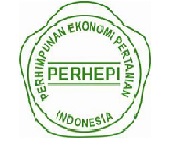Pelatihan Agro Eco-System Analysis Petani Ketela Pohon dalam Teknik Pengelolaan Organisme Pengganggu Tanaman
Abstract
Keywords
Full Text:
PDF (Bahasa Indonesia)References
Asmaliyah, A., & Rostiwati, T. (2015). Pengaruh pengaturan jarak tanam terhadap perkembangan serangan hama dan penyakit pulai darat (Alstonia angustiloba). Jurnal Penelitian Hutan Tanaman, 12(1), 41–50. https://doi.org/10.20886/jpht.2015.12.1.41-50
Azima, S., Syahribulan, Sjam, S., & Santosa, S. (2017). Analisis keragaman jenis serangga predator pada tanaman padi di areal persawahan Kelurahan Tamalanrea Kota Makassar. Bioma : Jurnal Biologi Makassar, 2(2), 12–18. https://doi.org/10.20956/bioma.v2i2.2042
Effendi, R., Salsabila, H., & Malik, A. (2018). Pemahaman tentang lingkungan berkelanjutan. Modul, 18(2), 75-82. https://doi.org/10.14710/mdl.18.2.2018.75-82
Herlinda, S., Waluyo, Estuningsih, S, & Irsan, C. (2008). Perbandingan keanekaragaman spesies dan kelimpahan arthropoda predator penghuni tanah di sawah lebak yang diaplikasi dan tanpa aplikasi insektisida. Jurnal Entomologi Indonesia, 5(2), 96–107.
Ibrahim, E., Fahmi, D. A., & Suryana, Y. (2019). Tingkat pengetahuan, sikap dan perilaku petani dalam pengelolaan konservasi musuh alami sebagai upaya pengendalian tungro di Kalimantan Selatan. Jurnal Lahan Suboptimal, 7(2), 121–127. https://doi.org/10.33230/jlso.7.2.2018.352
Mutiara, C., & Bolly, Y. Y. (2019). Identification of agricultural activities and soil fertility in the cultivation area of nuabosi cassava. Caraka Tani: Journal of Sustainable Agriculture, 34(1), 22-30. https://doi.org/10.20961/carakatani.v34i1.25708
Nuha, M. U., Fajriani, S., & Arifin. (2015). Pengaruh aplikasi legin dan pupuk kompos terhadap hasil tanaman kacang tanah (Arachis hypogaea L.) varietas jerapah. Jurnal Produksi Tanaman, 3(1), 75–80.
Nurindah. (2006). Pengelolaan agroekosistem dalam pengendalian hama. Perspektif: Review Penelitian Tanaman Industri, 5(2), 78–85.
PemdaEnde. (2017). (RKPD).
Purnomo, J. (2014). Pengaruh bahan organik dan pola tanam terhadap produktivitas typic kanhapludult. Prosiding Seminar Hasil Penelitian Tanaman Aneka Kacang dan Umbi, 859–866.
Roidah, I. S. (2013). Manfaat penggunaan pupuk organik untuk kesuburan tanah. Jurnal Bonorowo, 1(1), 30–43.
Siagian, L., Wilyus, & Nurdiansyah, F. (2019). Penerapan pola tanam tumpangsari dalam pengelolaan hama tanaman kacang hijau (Phaseolus radiatus L.). Journal Agroecotania, 2(2), 32–42. https://doi.org/10.22437/agroecotania.v2i2.8739
Sulle, A. (2008). Pengaruh kesuburan tanah terhadap penyakit blendok pada pertanaman jambu mete. Jurnal Perlindungan Tanaman Indonesia, 14(2), 70–75.
Syarief, M., & Tripama, B. (2013). Pengaruh pengelolaan hama berbasis ekologis terhadap keanekaragaman musuh alami dan tingkat serangan Crocidolomia pavonana Zell. (Lepidoptera: Pyralidae). Agritrop Jurnal Ilmu-Ilmu Pertanian, 12(1), 50–54.
Wahyunto, & Dariah, A. (2014). Degradasi lahan di Indonesia: Kondisi existing, karakteristik, dan penyeragaman definisi mendukung gerakan menuju satu peta. Jurnal Sumberdaya Lahan, 8(2), 81–93.
Wardani, N. (2017). Perubahan iklim dan pengaruhnya terhadap serangga hama. Prosiding Seminar Nasional Agroinovasi, 1015–1026.
Wijanarko, A., Taufiq, A., & Rahmianna, A. (2009). Pengaturan jarak tanam ubikayu dan kacang tanah untuk meningkatkan indeks pertanaman di lahan kering masam Banjarnegara. Balai Penelitian Tanaman Aneka Kacang dan Umbi. https://balitkabi.litbang.pertanian.go.id/infotek/pengaturan-jarak-tanam-ubikayu-dan-kacang-tanah/
Wulandari, R. (2016). Metode kunjungan lapangan untuk menanamkan kepedulian terhadap lingkungan hidup. Pedagogia: Jurnal Pendidikan, 5(1), 67-80. https://doi.org/10.21070/pedagogia.v5i1.90
DOI: https://doi.org/10.20961/prima.v5i2.55869
Refbacks
- There are currently no refbacks.
View My Stats

This work is licensed under a Creative Commons Attribution-ShareAlike 4.0 International License.


.jpg)



1.jpg)











